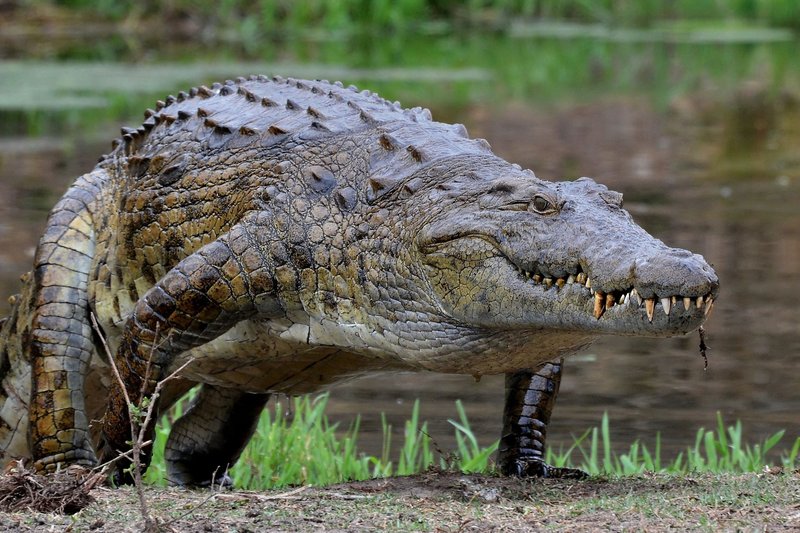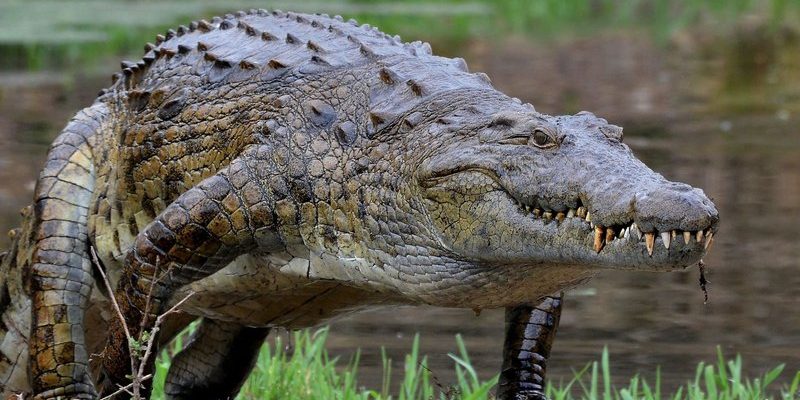
When we dive into the world of the Nile crocodile, it’s like peeling back the layers of an intricate story filled with survival, power, and the delicate balance of nature. From their incredible hunting techniques to their unique social structures, these reptiles capture our imagination and remind us of the wild and untamed aspects of our planet. So, grab a cup of coffee, and let’s explore ten incredible facts about these remarkable creatures that live among us.
1. Ancient Lineage: A Living Dinosaur
Did you know that the Nile crocodile is one of the oldest living species? These reptiles have been gliding through rivers and swamps for over 200 million years! That means they were around long before the dinosaurs went extinct. Picture that—a creature that has seen the Earth change dramatically, adapting to its surroundings while many other species have come and gone.
Their closest relatives include birds; yes, you read that right! Evolutionarily speaking, crocodiles and birds share a common ancestor. This connection is fascinating because it hints at the complex web of life on our planet. Just imagine sitting by the Nile, watching these ancient beings as they bask in the sun, their tough skin glistening under the hot African sun.
2. Size Matters: The Largest Reptile
The Nile crocodile is not just your average reptile; it’s the largest crocodilian species in Africa. Adult males can grow up to 20 feet long and weigh over 1,500 pounds! To put that into perspective, that’s longer than a small car and heavier than most people. Their massive size gives them a powerful presence on the riverbanks, where they dominate their territory.
What’s even more impressive is their strength. A Nile crocodile’s bite can crush bones with a force of over 2,000 pounds per square inch. That’s like trying to bite through a steel beam! This power makes them one of nature’s top predators, capable of taking down prey much larger than themselves.
3. Masters of Camouflage
Nile crocodiles are experts in the art of hiding. They have rough, scaly skin that blends beautifully into their watery environment. When they lie just below the water’s surface, only their eyes and nostrils peek out, making it incredibly difficult for unsuspecting prey to spot them. This camouflage is a critical hunting technique.
When you think about it, their stealth is much like a ninja in the wild. They can remain motionless for hours, waiting for the right moment to strike. And when that moment arrives, they can erupt from the water with startling speed. Imagine yourself floating down the Nile and suddenly, out of nowhere, there’s a powerful splash—it’s both thrilling and a bit terrifying!
4. Social Creatures with Unique Behaviors
While we often see crocodiles as solitary hunters, they actually exhibit some fascinating social behaviors. Nile crocodiles can be quite social, especially during the breeding season. They communicate through a variety of sounds, including growls and hisses, which can help them establish dominance or attract a mate.
In some cases, you might even see them basking together or sharing space during the cooler parts of the day. This social aspect is intriguing because it shows that they have more complex interactions than just hunting and eating. Watching these interactions can be like observing a mini-society in action, with each croc playing its role in the community.
5. Incredible Parental Care
You might not associate large predators like crocodiles with good parenting, but Nile crocodiles are surprisingly nurturing. Female crocodiles demonstrate exceptional care for their young. After laying her eggs, she will stay close by, protecting them from predators. Once the eggs hatch, she gently carries her tiny hatchlings in her mouth to the water.
Imagine a mother crocodile carefully transporting her babies while avoiding potential dangers. This instinctual behavior highlights the bond between mothers and their offspring. It’s not just about survival; it’s also about teaching the next generation how to thrive in the wild.
6. An Unmatched Diet: All-Eaters
Nile crocodiles are known for being opportunistic feeders, meaning they’ll eat pretty much anything that comes their way. Their diet typically includes fish, birds, mammals, and even other reptiles. They have incredibly powerful jaws that allow them to take down prey with ease.
What’s fascinating is their ability to go long periods without food. When they hunt, they often swallow their prey whole or take large bites. This adaptability means that even if food is scarce, they can survive. Their ability to store energy is like having a backup battery, ready to power them through lean times.
7. The Importance of Habitat: Ecosystem Role
Nile crocodiles play a crucial role in their ecosystems. As apex predators, they help maintain the balance of aquatic life by controlling fish populations. Without them, certain species could overpopulate, leading to an imbalance that affects the entire food chain.
You might not think of crocodiles as protectors of their environment, but they are. They create nesting sites that can benefit other species and help keep ecosystems healthy. This role is a reminder of how interconnected life is. Each creature, no matter how fierce, has its place in nature’s puzzle.
8. Unique Communication Skills
Did you know that Nile crocodiles communicate not just with sounds but also with body language? They often use gestures to signal their intentions to other crocodiles, whether it’s a threat or an invitation to mate. This form of communication is essential for maintaining social structures and relationships among them.
Think of it like a dance; their movements can convey complex messages in a world where sound may not always travel well. It’s fascinating to realize that beneath their tough exterior, there’s a layer of social interaction that adds depth to their behaviors.
9. Adaptations to Climate Change
As climate change affects habitats worldwide, Nile crocodiles show remarkable adaptability. They can thrive in various environments, from freshwater lakes to brackish marshes. Their tough skin helps them withstand temperature changes, and they can also tolerate lower oxygen levels.
This adaptability also extends to their reproductive strategies. During extreme weather, females may adjust the timing of their nesting to ensure the survival of their young. It’s like they have a built-in survival guide that helps them navigate the changing landscapes they call home.
10. Conservation Status: A Call to Action
Despite their resilience, Nile crocodiles face threats from habitat destruction and poaching. Their skins are highly valued, and as a result, illegal hunting has reduced their populations in some areas. Conservation efforts are crucial to ensuring the survival of this iconic species.
Organizations are working hard to protect their habitats and educate local communities about the importance of crocodiles in their ecosystems. Supporting these efforts is vital because every creature plays a role in maintaining the balance of nature. By protecting Nile crocodiles, we’re also safeguarding the health of their environment.
As we’ve seen, the Nile crocodile is much more than just a fearsome predator. Its fascinating adaptations, social behaviors, and ecological importance make it a true marvel of nature. Next time you think about the Nile crocodile, remember just how much deeper their story goes than what meets the eye. These ancient creatures continue to inspire awe and respect for the wonders of our natural world.

